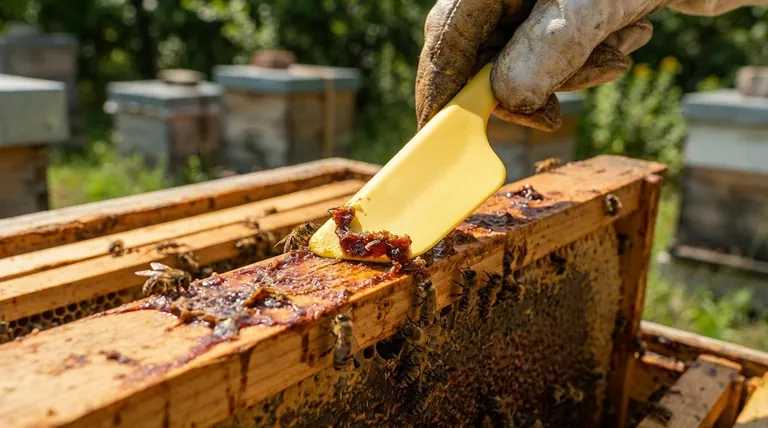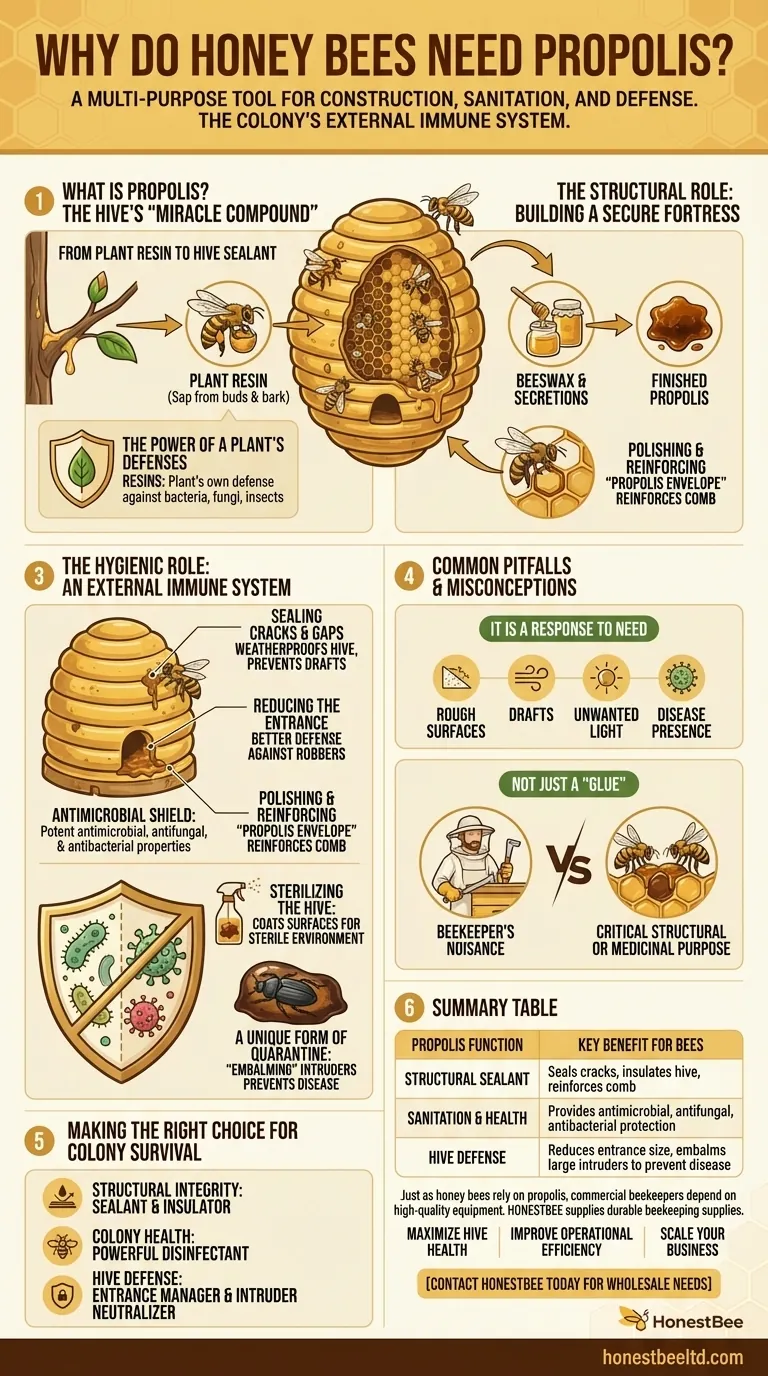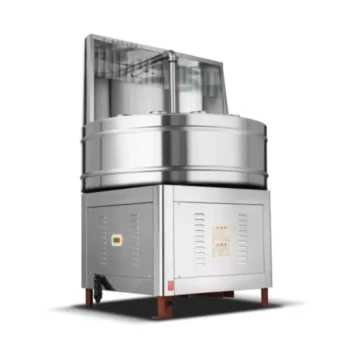In short, honey bees need propolis as a multi-purpose tool for construction, sanitation, and defense. It serves as a caulk to seal gaps and insulate the hive, a disinfectant to sterilize surfaces, and an embalming agent to neutralize threats, making it indispensable for the colony's health and survival.
Propolis is far more than a simple glue. It is best understood as the colony's external immune system—a substance collected from plants that provides the hive with structural integrity and a powerful defense against disease.

What is Propolis? The Hive's "Miracle Compound"
To understand why bees need propolis, we must first understand what it is and where it comes from. It is a complex substance actively created by the colony for specific purposes.
From Plant Resin to Hive Sealant
Honey bees create propolis by collecting sticky, sap-like resins from the leaf buds and bark of trees and plants, such as poplars, birches, and conifers.
Forager bees scrape these resins from the plant, pack them into the pollen sacks on their hind legs, and transport them back to the hive. There, other worker bees mix the resin with beeswax and other secretions to create the finished propolis.
The Power of a Plant's Defenses
Trees produce these resins as a protective measure to seal wounds and defend against bacteria, fungi, and insects.
By collecting these resins, honey bees are essentially borrowing the defensive properties of the plants and incorporating them directly into the structure of their home.
The Structural Role: Building a Secure Fortress
The most visible use of propolis is as a building material that reinforces the hive against the elements and makes it more defensible.
Sealing Cracks and Gaps
Bees use propolis to seal any small cracks or unwanted openings in the hive, typically those smaller than the standard "bee space" of 5/16th of an inch.
This sealant weatherproofs the hive, preventing drafts and keeping rain out, which is especially critical in preparation for winter.
Reducing the Entrance
Colonies may use propolis to remodel and reduce the size of the hive entrance. A smaller entrance is easier to guard against robbers like wasps or other bees, improving the colony's overall security.
Polishing and Reinforcing
Bees apply a thin layer of propolis to many interior surfaces, including the inside of brood cells before the queen lays her eggs. This "propolis envelope" reinforces the comb and contributes to the overall structural integrity of the hive.
The Hygienic Role: An External Immune System
Propolis's invisible but most critical function is sanitation. Its powerful antimicrobial properties are fundamental to maintaining a healthy environment inside a densely populated colony.
Antimicrobial Shield
Propolis has potent antimicrobial, antifungal, and antibacterial properties. This helps to prevent the growth and spread of pathogens that could otherwise devastate the colony.
Sterilizing the Hive
By coating surfaces with propolis, the bees create a sterile environment. This constant sanitation is vital for protecting vulnerable brood from disease and preventing food stores from becoming contaminated.
A Unique Form of Quarantine
If an intruder like a mouse or large beetle enters the hive and is killed, it may be too large for the bees to remove.
In these cases, the bees will completely encase the corpse in propolis. This "embalming" process prevents the body from decomposing and spreading disease throughout the hive.
Common Pitfalls and Misconceptions
While essential for bees, propolis is often seen through a different lens by beekeepers, and its production isn't constant.
It Is a Response to Need
Bees are stimulated to collect more propolis when they detect specific problems. These triggers include rough hive surfaces, drafts, unwanted light entering the hive, and the presence of disease.
Not Just a "Glue"
The most common misconception is that propolis is just a sticky inconvenience that glues frames and boxes together. For beekeepers, it can be a nuisance, but for the bees, every bit of it serves a critical structural or medicinal purpose. Its presence is a sign of a colony actively managing its own health and security.
Making the Right Choice for Colony Survival
Understanding the roles of propolis reveals that bees don't just use it—they depend on it for their most fundamental needs.
- If the primary focus is structural integrity: Propolis is the hive's sealant and insulator, protecting it from weather and reinforcing its internal structure.
- If the primary focus is colony health: Propolis functions as a powerful disinfectant, creating a sterile environment and preventing the spread of pathogens.
- If the primary focus is hive defense: It is used to manage the entrance size and neutralize internal threats that are too large to remove.
Ultimately, propolis is a remarkable example of how honey bees harness resources from their environment to create a safe, stable, and healthy home.
Summary Table:
| Propolis Function | Key Benefit for Bees |
|---|---|
| Structural Sealant | Seals cracks, insulates hive, and reinforces comb. |
| Sanitation & Health | Provides antimicrobial, antifungal, and antibacterial protection. |
| Hive Defense | Reduces entrance size and embalms large intruders to prevent disease. |
Equip Your Apiary with the Right Tools for Healthy Hives
Just as honey bees rely on propolis for a thriving colony, commercial beekeepers and distributors depend on high-quality equipment for success. HONESTBEE supplies the durable beekeeping supplies and equipment your operation needs to support strong, productive hives.
We help you:
- Maximize Hive Health: Provide your bees with the best environment to thrive.
- Improve Operational Efficiency: Durable, well-designed equipment saves time and labor.
- Scale Your Business: Reliable wholesale supplies for commercial apiaries and distributors.
Ready to strengthen your beekeeping business? Contact HONESTBEE today to discuss your wholesale needs and discover how our equipment can contribute to your success.
Visual Guide

Related Products
- Professional Long-Handled Silicone Honey Scraper for Beekeeping
- Honey Wax Separating Wax Press with Metal Screw Wax Separator Machine
- Stainless Steel Honey Press Wax Press with Tank
- Stainless Steel Pail Perch Bucket Bench
- Stainless Steel Manual Honey Press with Guard for Pressing Honey and Wax
People Also Ask
- What other tools are available for honey uncapping besides knives? Find the Right Tool for Your Apiary's Scale
- How much time does it take to do beekeeping? A Realistic Breakdown for Beginners & Pros
- What type of bees are better adapted to certain climatic conditions? Match Bee Strategy to Your Climate for Success
- What is honey uncapping? The Essential First Step to Harvest Your Honey
- Why is it important to remove detached honeycomb pieces? Prevent Pests, Disease, and Robbing



















